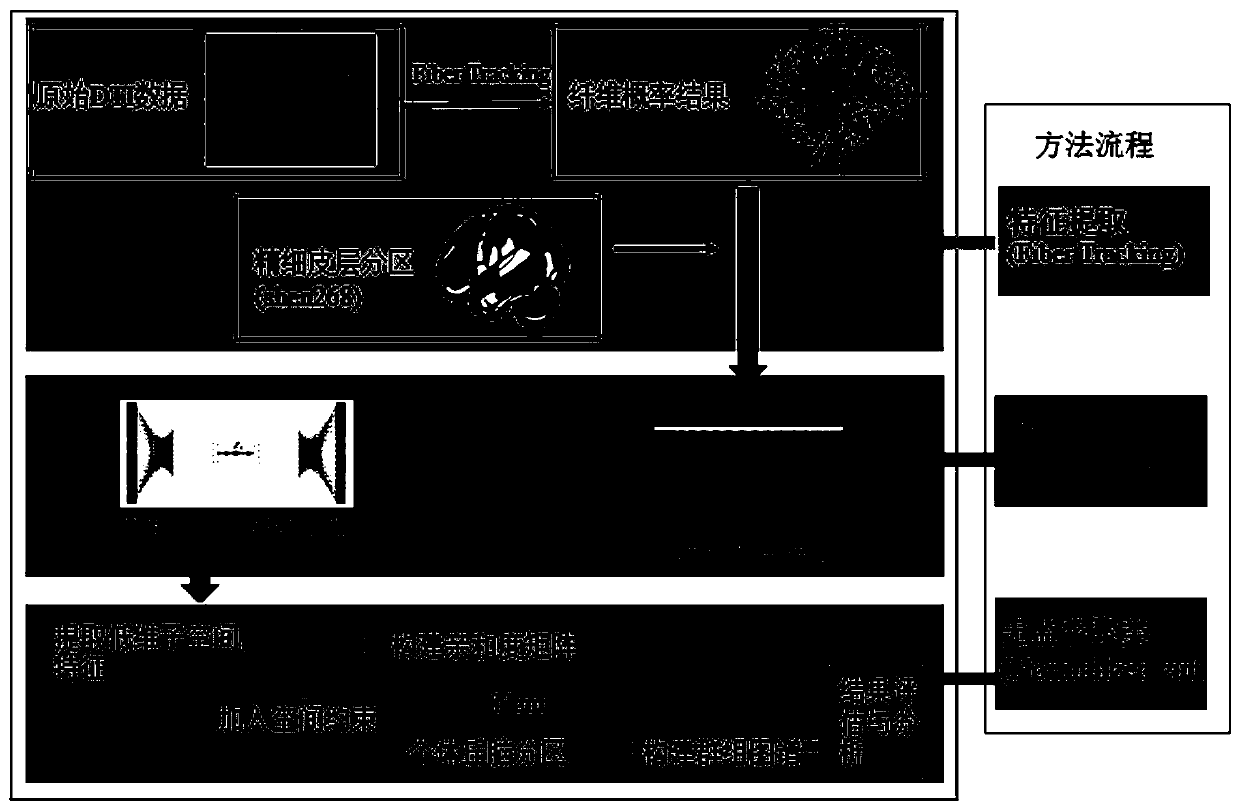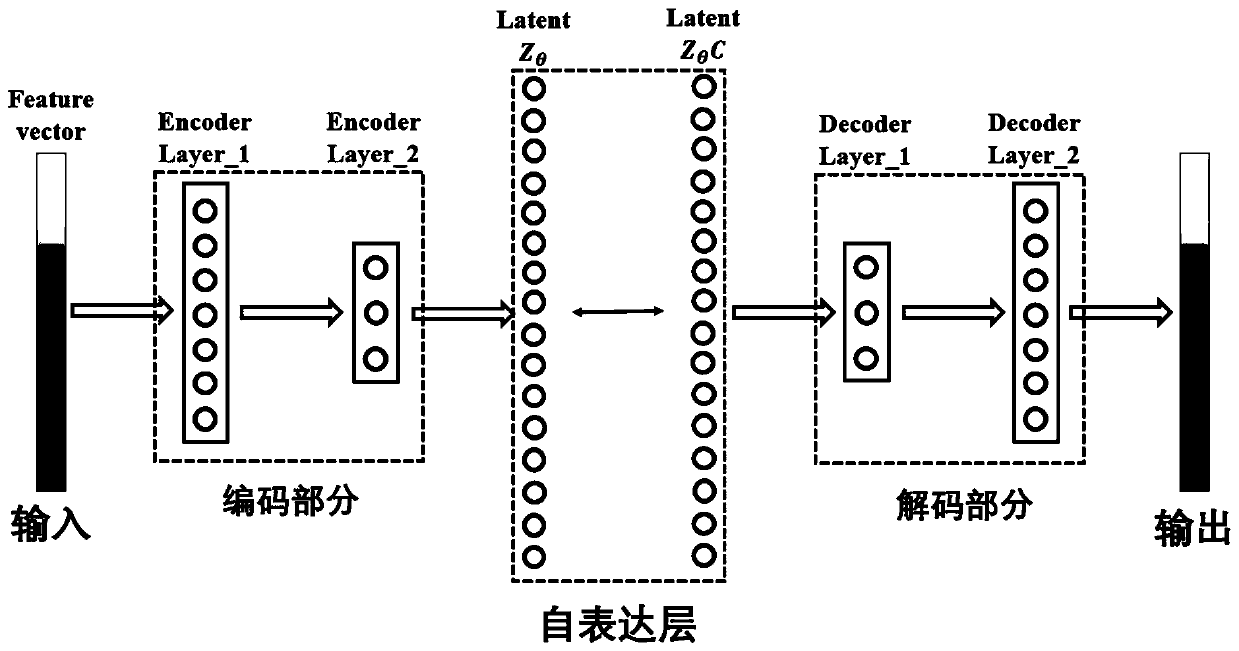Thalamus function partitioning method based on subspace feature learning
A subspace feature and functional partitioning technology, applied in the field of digital images, can solve the problems of high dimension of connection feature data and the influence of noise.
- Summary
- Abstract
- Description
- Claims
- Application Information
AI Technical Summary
Problems solved by technology
Method used
Image
Examples
Embodiment Construction
[0065] The technical solutions of the present invention will be further described below in conjunction with the accompanying drawings and embodiments.
[0066] A kind of thalamic functional partitioning method based on subspace feature learning of the present invention, such as figure 1 As shown, first use diffusion tensor imaging to perform fiber tracking to obtain the internal structural connection information of the living brain; secondly, for complex nonlinear thalamocortical structural connection features, the present invention uses the hidden subspace mapping (latent representation) of deep subspace network learning features ); Finally, spatial constraints are placed on the voxel features to reduce the impact of noise, better reflect the spatial topology, enrich the extraction of spatial information, and facilitate the effective clustering of thalamic voxels. details as follows:
[0067] Step 1, preprocessing the raw data of the diffusion tensor image, extracting image ...
PUM
 Login to View More
Login to View More Abstract
Description
Claims
Application Information
 Login to View More
Login to View More - R&D
- Intellectual Property
- Life Sciences
- Materials
- Tech Scout
- Unparalleled Data Quality
- Higher Quality Content
- 60% Fewer Hallucinations
Browse by: Latest US Patents, China's latest patents, Technical Efficacy Thesaurus, Application Domain, Technology Topic, Popular Technical Reports.
© 2025 PatSnap. All rights reserved.Legal|Privacy policy|Modern Slavery Act Transparency Statement|Sitemap|About US| Contact US: help@patsnap.com



